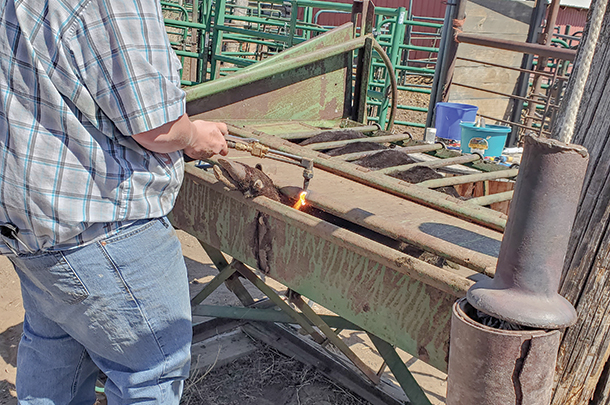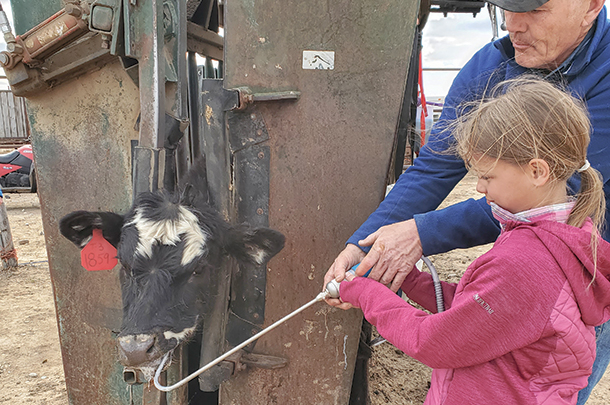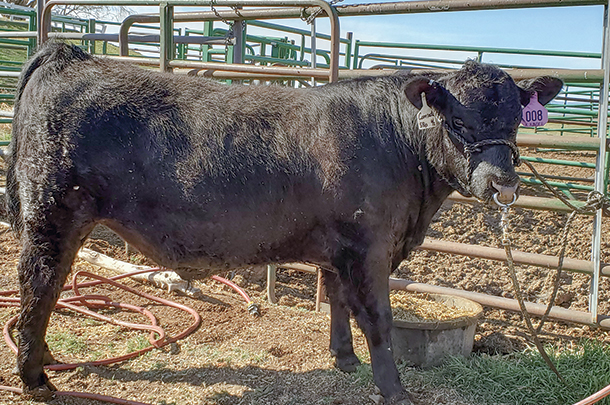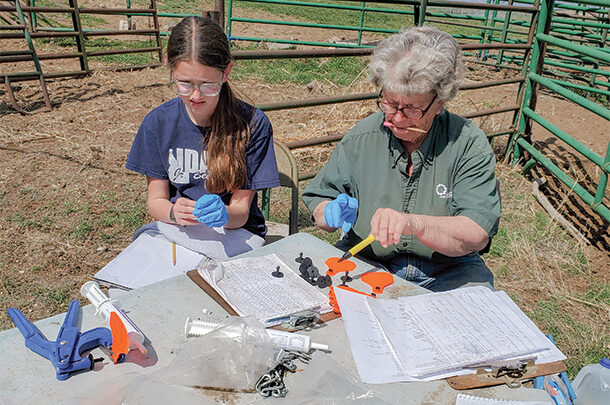The equipment and the tools we use in livestock production agriculture are very diverse. We use different kinds of equipment during breeding, birth (calving, kidding, lambing, farrowing), weaning, feeding, treating, transporting and handling livestock. Additional equipment and gear are used as animals are monitored and evaluated and records are collected.
Using the right equipment for the task at hand is important. I don’t know how many times I have not used the right piece of equipment for the job at hand. I got away with it and have considered myself lucky many times – simple things like using pliers as a hammer, a screwdriver as a chisel or a wrench as a pry bar. Why do I do that? If I am honest with myself, laziness and being unprepared are the most frequent reasons.
My excuse is often, “I don’t have time to get the right tool.” Time is important, particularly when working on the farm or ranch. Tasks take time, so a quick use of the wrong tool will save time, right? The tools I have mentioned are relatively inexpensive, so if I break them, no big deal, right? The truth is that little things add up, so replacing a wrench, pliers or a screwdriver may only cost $35 for the item itself, but then you add in the cost of your time, etc., and the costs keep going up. And these days, shelves are often empty, and items are consistently on back order.
Recently, my kids were in the market for a new Scotch comb, since the old one was dropped in the corral and broken after being walked over. Holy cow, a new Scotch comb costs $50. What happened to the $17.50 model? If you add in the time and travel it took to get a new comb, that $50 cost just went even higher.
Costs are not the only factor to consider; there is the safety aspect. Using the wrong tool for a particular job may result in an injury to the person using the tool or those individuals in close proximity when the job is performed.
Data from the 2019 U.S. Bureau of Labor Statistics report show that agriculture is one of the most dangerous occupations in America with 573 fatalities, or an equivalent of 23.1 deaths per 100,000 workers. Farmers, ranchers and farm workers experience a number of risks in getting their jobs done. They also suffer from increased rates of respiratory diseases, noise-induced hearing loss, skin disorders, certain cancers, chemical toxicity and heat-related illnesses, which may or may not be recorded in the labor data.
During my 40-plus years of being raised and living in an agricultural community, there have been numerous injuries. There have been those who were kicked, mauled or gored by livestock. Some injuries have resulted due to slow-moving vehicle crashes, top-heavy truck rollovers and collisions between equipment and passenger vehicles. Some individuals have lost their lives due to collapsed silage piles, farm structures or large equipment and tractors, while some have lost or injured appendages such as fingers, hands, arms, toes, feet and legs.
Fall harvest time can be one of the busiest and most dangerous seasons of the year for the agriculture industry. Therefore, National Farm Safety and Health Week is recognized in September. I think spring and summer are just as busy. Data show that every day about 100 agricultural workers suffer a lost-work-time injury. From 2008-10, 50% of all hired crop worker injuries were classified as a sprain or strain. In 2014, an estimated 12,000 youth were injured on farms; 4,000 of these injuries were due to farm work. Injuries can be avoided and reduced. Take the time to read the following four principles so you and your crew can work safely.
1. Take time to review the task at hand
 Be sure to choose the most efficient tools for the job at hand. Photo by Cindy Kinder.
Be sure to choose the most efficient tools for the job at hand. Photo by Cindy Kinder.
Remind yourself and teach others how the equipment is to be used. For example, tell everyone where the cows are and which gates you are bringing the herd through. If you have new crew members, tell them where the hazards in the pasture are, such as holes, irrigation risers or any other obstacles. This information will help keep them from having an unexpected fall off a four-wheeler. Going slow and steady when bringing the cows into the corral keeps everyone safe and the corral in one piece.
Remind the vaccination crew which injections use the large-gauge needle or the small-gauge needle. Putting a thick pharmaceutical through a very small hole can cause it to explode all over the work area, which wastes the product and can irritate skin and eyes. Also, remind them about subcutaneous and intramuscular injections and which needles go with each type of injection. Beef Quality Assurance (BQA) guidelines say to use longer needles for intramuscular and shorter needles for subcutaneous injections. For the safety of the animal, exchange needles every 10 head.
2. Choose the right kind of equipment
 Reviewing safety protocols with your crew beforehand keeps everyone, including the animal, safe. Photo by Cindy Kinder.
Reviewing safety protocols with your crew beforehand keeps everyone, including the animal, safe. Photo by Cindy Kinder. Sticks, hand hurdles and prods are used to move livestock when you are in close proximity. These tools are used as an extension of your hand and body to keep you at a safer distance from the livestock. There are many kinds, such as fiberglass sorting sticks, hand hurdles, rattle paddles, whips and flag sticks. Each has a place and time for its use with livestock species. Fiberglass sticks can be used when a tap is needed to move the cows in a direction. Hand hurdles cause pigs to move the opposite direction because they cannot see. Rattle paddles and whips make a noise that causes goats or cattle to move, and flag sticks have a flag that can be seen by sheep, causing them to change direction. Knowing which type of livestock responds better to touch, sound or sight will help you decide what equipment to use while keeping everyone safe.
3. Make sure the equipment is in working order
 Using the right equipment and tools makes human-animal interactions less stressful for livestock as well as people. Photo by Cindy Kinder.
Using the right equipment and tools makes human-animal interactions less stressful for livestock as well as people. Photo by Cindy Kinder.
Keep your corrals and alleyways clear of debris. Make sure footing is good for cattle and your crew. Evaluate each gate to make sure it opens and closes properly. Try the chute out to ensure it works correctly and easily. Double-check your walkways to make sure they are cleaned off and will support workers. This will help the cows move through safely and keep your crew working efficiently. Teach all crew members how to read livestock and understand flight zones. We all have that one cow in the herd that is fine in the pasture until you get in her bubble, then she moves faster than the speed of light. I am sure these cows are on your cull list, but sometimes your crew needs to be reminded of who they are. (My cow is 3-orange; she finally went to town last fall.)
4. Be safe
If the flow of the process is not working, don’t force it. Take a moment and listen to what the livestock are saying and adjust the equipment and/or the crew. Sometimes, something as simple as moving the bright yellow shirt (or the person wearing it) to a different location will allow the livestock to walk smoothly through your corrals and equipment.
Applying these four principles of reviewing equipment protocols, being prepared and having the right equipment, making sure the equipment works and being safe will help your operation in any production situation you find yourself in. We need all of us in agriculture to continue our work of feeding the world, so be safe and enjoy this working season with family, friends and co-workers.








